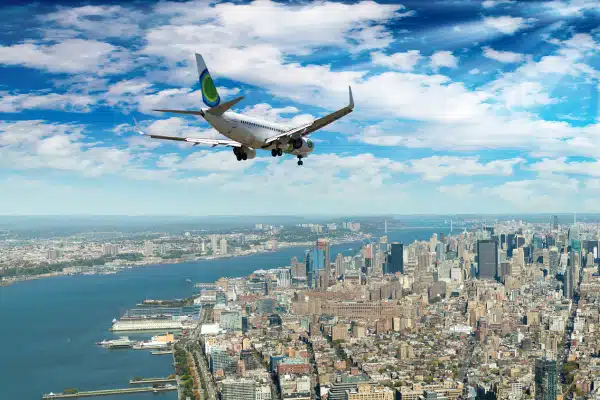Why does it feel like frequent flier programs weaken customer loyalty?
If you travel a lot like me, you know the struggle of trying to maintain your ‘status’ with frequent flier programs. It’s like playing Tetris, trying to determine which trips to book on which airline to add up the right number. At this point, I’m pretty familiar with all of these loyalty programs. I have to say.. they all kind of suck. At least in the way they’re communicated to customers.
They used to be like slot machines, straightforward as can be. You pull the handle and when the rows match up, you win. Now, a zillion restrictions and rules have been added, all designed to make winning harder. And, while we’re at it, why are we even still using “miles” as a currency? The airlines certainly aren’t.
Have you ever tried to redeem an airline reward and it just… worked? 🤷♀️
The intricate qualification requirements, elusive benefit conditions, and the fluid nature of these programs make it nearly impossible to understand and enjoy your perks.
But don’t just take my word for it.
The Plane Truth About Frequent Flier Programs
The U.S. Department of Transportation (DOT) recently opened an investigation into such airline programs.
Senators Dick Durbin and Roger Marshall cited the “unilateral contracts” of frequent flier programs that permit them to modify the terms at any time (!!). They wrote, “These programs incentivize consumers to purchase goods and services, obtain credit cards, and spend on those credit cards in exchange for promised rewards—all while retaining the power to strip consumers of those rewards at any moment.”
Last September, Delta announced major changes to its SkyMiles program. These modifications include eliminating two of the three avenues for accruing points and doubling the amount passengers would have to spend to qualify for the same status in 2024.
Customers were so outraged that CEO Ed Bastian was forced to retract some of the new changes. However, all he did was slightly lower the new qualifying thresholds for certain tiers. (FWIW, Delta is the only major carrier I don’t have premium status with.)
American Airlines similarly updated its AAdvantage program in 2023, making it more difficult for customers to achieve its lowest tier. Such drastic annual changes to earning thresholds that move the goalposts undermine trust for passengers.
I started wondering if airlines were making more from their credit card partnerships than from flights. After all, that’s the behavior they seem to be incentivizing most. After some research, it seems like that’s the case.
These loyalty programs are actually massive profit centers that funded billions of dollars in loans during the pandemic.
Long story short:
- Credit card companies and other merchants buy miles upfront from airlines. Then, they encourage customers to spend thousands of dollars to earn them
- Due to many factors, it is much harder to earn miles by flying. 58% of miles are earned “on the ground.”
- Airlines can devalue miles at any time, which means…
- Credit card companies are happy because consumers keep spending to earn more
- On average, only 8% of earned miles are redeemed across major airlines (Southwest had the highest rate of 14%)
While airline revenue is soaring, passenger trust is taking a nosedive. Because these “loyalty” programs are driven more by third-party spending than flight activity, airlines are hardly creating repeat customers – and certainly not superfans. This approach may boost profits in the short term but damages customer relationships and brand affinity over the long run.
By the way, it isn’t just airlines giving customers the runaround. Don’t even get me started on the joke that is hotel rewards programs. It feels like all of these customer loyalty programs leave a lot to be desired.
To successfully change these trends, airlines must prioritize customer needs at least as much as corporate profits. This means simplifying the qualification and redemption structure, eliminating unfair restrictions, and aligning customer behaviors with the program’s objectives.
Most importantly, frequent flier programs need transparency and consistency to rebuild passenger goodwill. The focus of loyalty programs should be the direct relationship between the airline and the customer. A true loyalty program would not prioritize brand partnerships over the passenger experience. Otherwise, call it what it is: a profit center, not a loyalty or rewards program.
Even when airlines try to paint changes as good for customers, the constant changes erode customer confidence. This also breeds frustration, impatience, and even apathy.
What does this mean for you?
Regardless of what you’re selling, your customers want to feel appreciated for their continued support.
- Make sure your qualification or accrual system is aligned with consumer behavior.
- Keep the rules and restrictions to a minimum. The harder it is to use or understand, the less likely your customers will feel compelled to return.
- Offer personalized, high-quality perks that will force your customers to brag about you to their friends
By prioritizing the customer’s interests and consistently delivering value, loyalty programs can foster long-lasting relationships and increased customer satisfaction.





